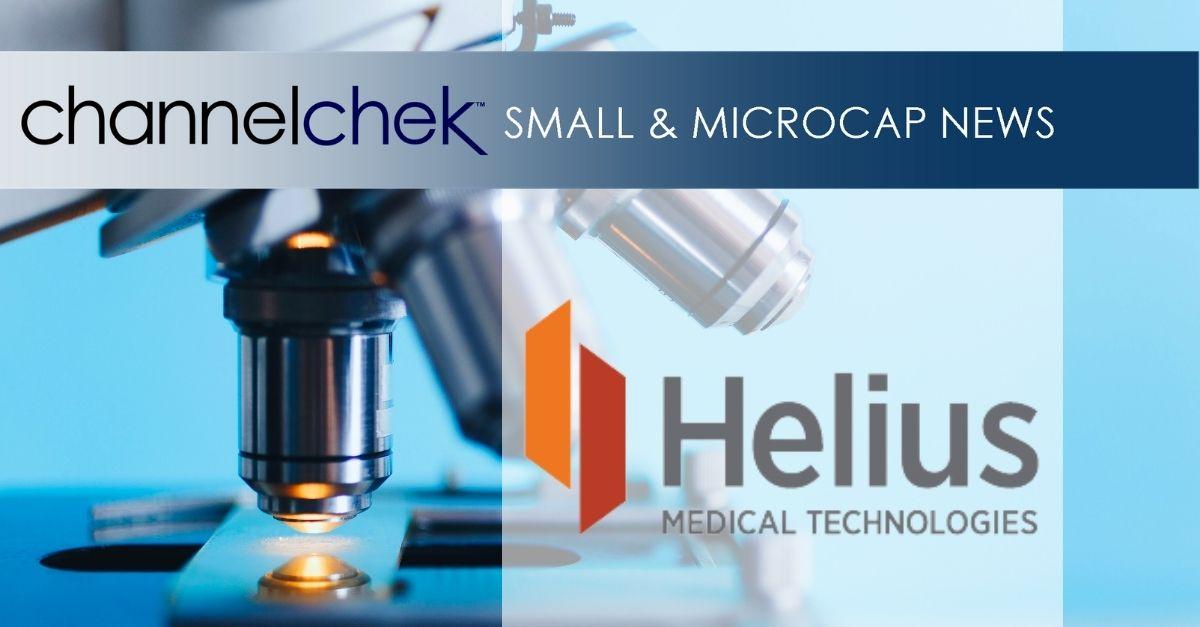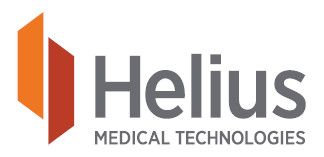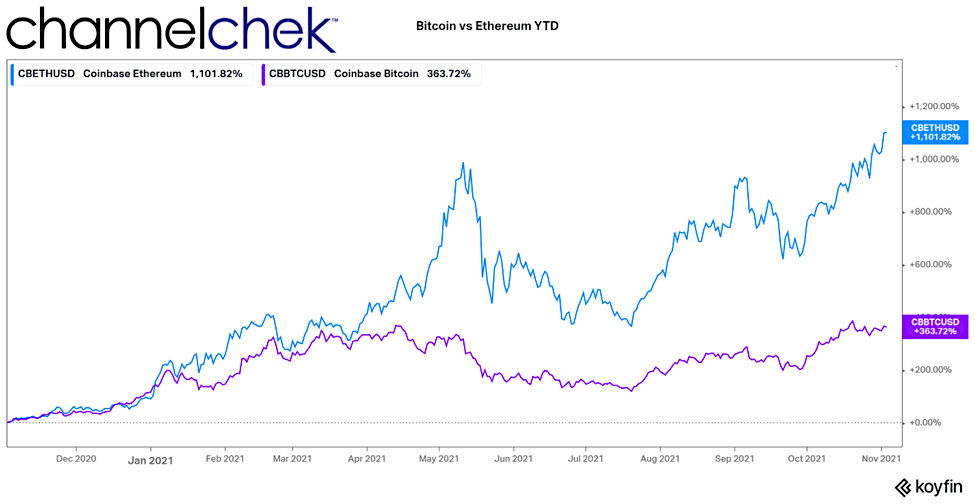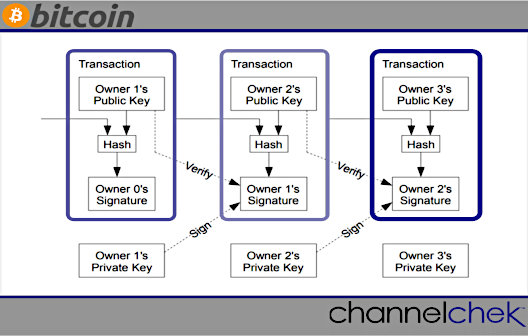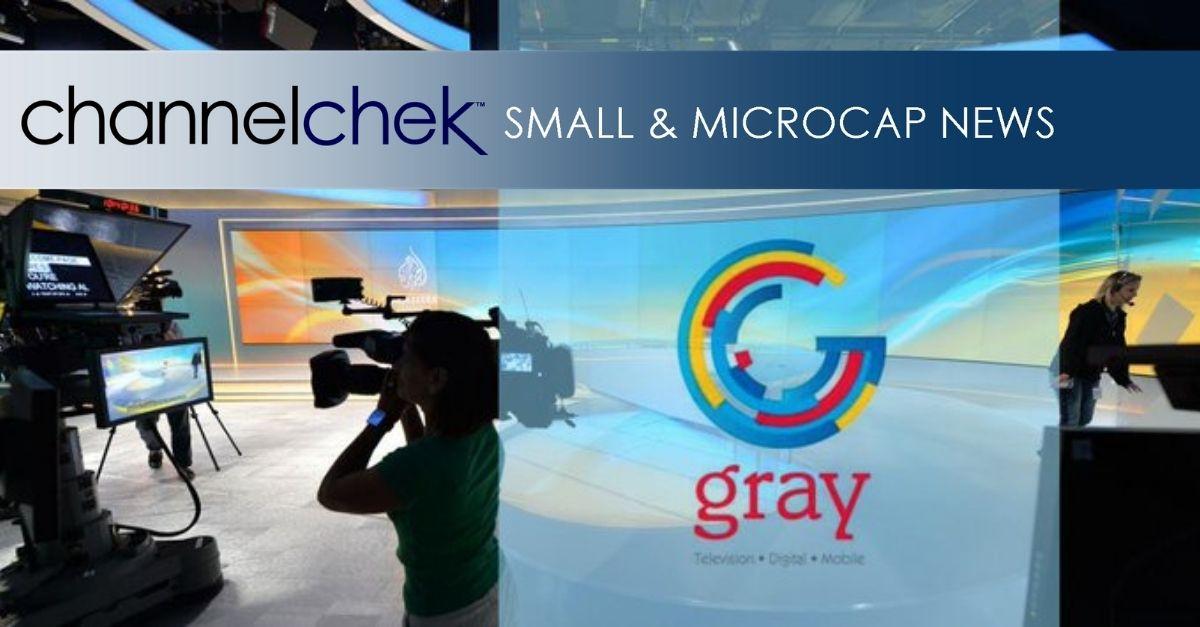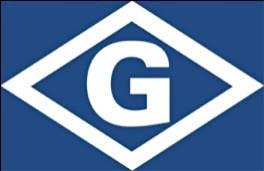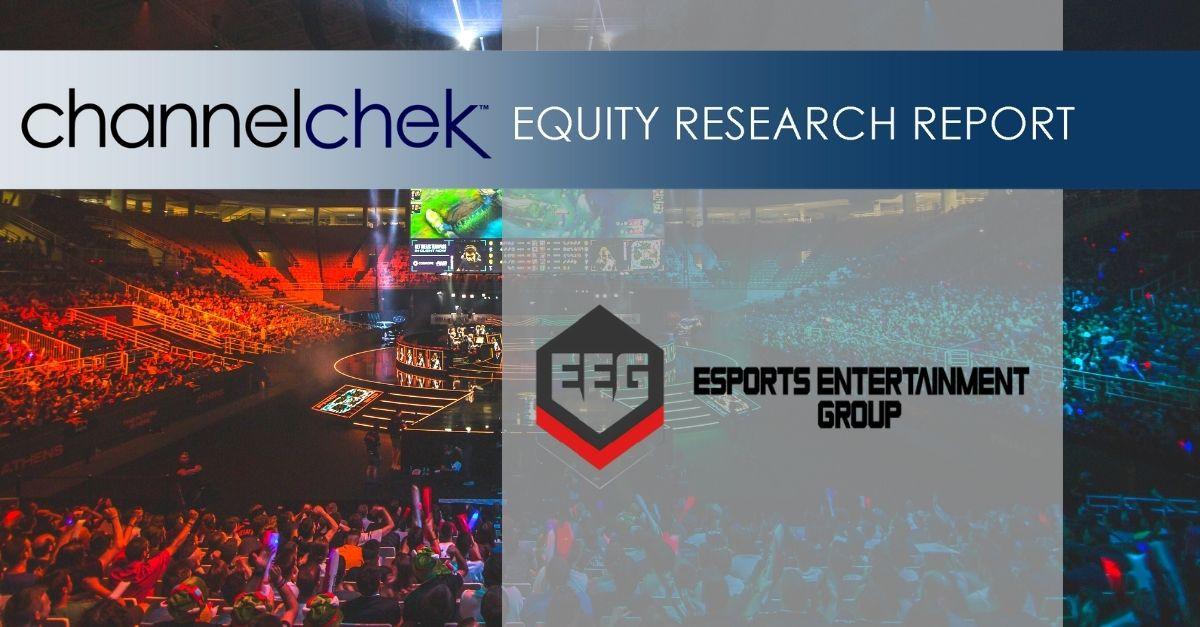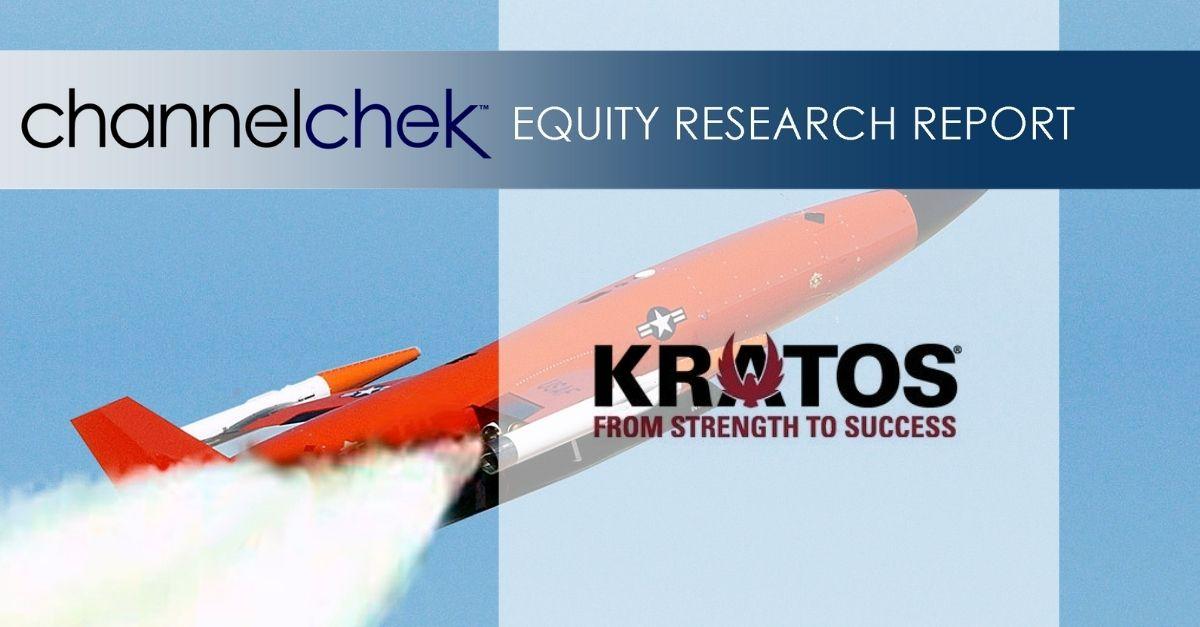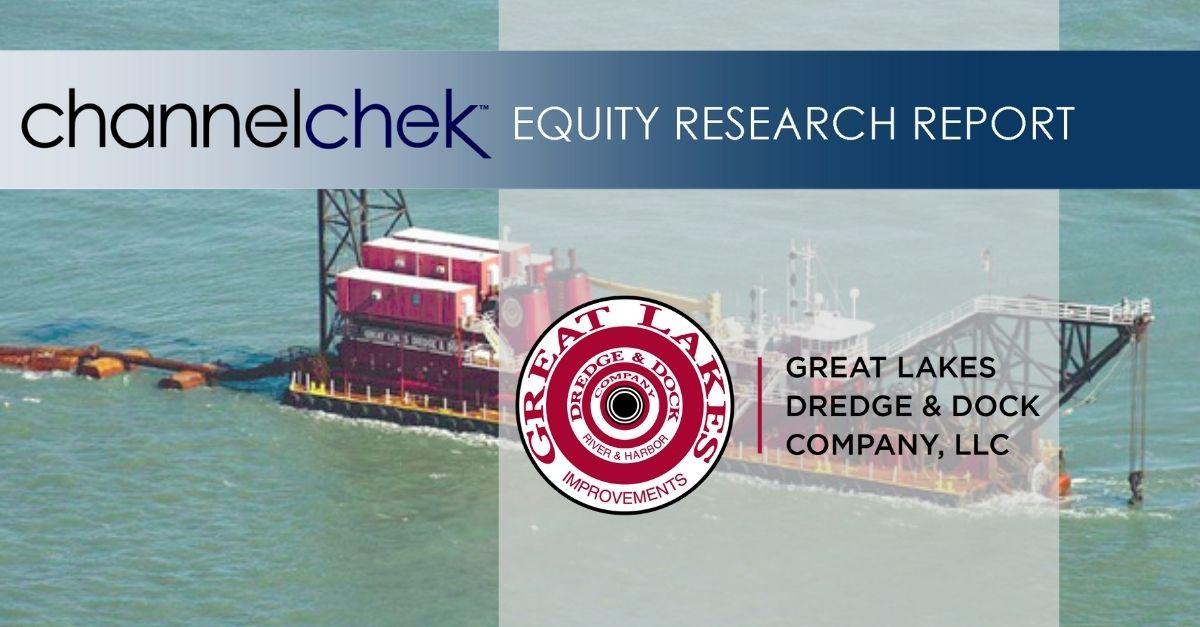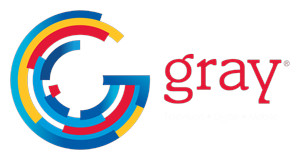
Gray Reports Third Quarter Operating Results
ATLANTA, Nov. 04, 2021 (GLOBE NEWSWIRE) — Gray Television, Inc. (“Gray,” “we,” “us” or “our”) (NYSE: GTN) today announced financial results for the third quarter ended September 30, 2021. We experienced strong momentum in the first nine months of 2021 and we believe it will continue throughout the remainder of the year. Key financial results were as follows:
- Total revenue was $601 million in the third quarter of 2021, essentially unchanged from the third quarter of 2020. The primary components of revenue were: combined local and national broadcast advertising revenue of $292 million and retransmission consent revenue of $266 million, both of which significantly exceeded our expectations and guidance.
- Net loss attributable to common stockholders for the third quarter of 2021 was $30 million, or $0.32 per fully diluted share. This resulted from non-cash losses of $53 million, in the third quarter, on the regulatory divestitures of television stations in overlap markets necessary to complete our recent and pending acquisitions. In addition, related to our recently completed and pending acquisitions, in the third quarter, we have incurred $11 million of incremental Transaction Related Expenses, as defined below.
- Broadcast Cash Flow for the third quarter of 2021 was $204 million, decreasing $67 million, or 25%, from the third quarter of 2020. Our Adjusted EBITDA for the third quarter of 2021 was $186 million, a decrease of $75 million, or 29%, from the third quarter of 2020.
- In the third quarter of 2021, our combined local and national broadcast revenue, excluding political advertising revenue (“Total Core Revenue”), was $292 million, increasing by $55 million, or 23% compared to the third quarter of 2020. Total Core Revenue increased as advertiser demand continued to recover. Gray’s Total Core Revenue in the third quarter of 2021 increased by $18 million, or 7% over the third quarter of 2019, the most recent non-political and pre-pandemic year.
- As of September 30, 2021, our total leverage ratio, as defined in our senior credit facility, was 4.16 times on a trailing eight-quarter basis, netting our total cash balance of $322 million and giving effect to all Transaction Related Expenses. As of September 30, 2021, the amount available under our revolving credit facility was $299 million. We are not subject to any maintenance covenants in our credit facilities at this time.
- On August 2, 2021, we acquired all outstanding shares of Quincy Media, Inc. (“Quincy”) for an adjusted purchase price of $930 million in cash (the “Quincy Transaction”). Simultaneously, we completed the divestiture to Allen Media Broadcasting (“Allen”) of certain television stations in the seven markets in which we currently operate, for an adjusted purchase price of $398 million in cash, (the “Allen Transaction”), in order to facilitate regulatory approvals for the Quincy Transaction.
- In order to facilitate regulatory approvals for our pending acquisition of Meredith Corporation’s Local Media Group (the “Meredith Transaction”), on September 23, 2021, we divested our existing television station WJRT (ABC) in the Flint-Saginaw, Michigan market (DMA 64), to Allen for an adjusted purchase price of $72 million in cash.
- In connection with, and contingent upon the completion of the Meredith Transaction, we have agreed to complete certain financing transactions. Related to our Senior Credit Facility, we (1) agreed to incur a $1.5 billion incremental term loan under our senior credit facility, subject to market conditions at the time of financing and (2) agreed to amend and restate our existing revolving credit facility to increase our borrowing capacity under the facility from up to $300 million to up to $500 million, which will consist of (i) a $425 million five year revolving credit facility and (ii) a $75 million revolving credit facility with commitments expiring January 2, 2026. In addition, Gray Escrow II, Inc., our special purpose wholly-owned subsidiary, has agreed to issue $1.3 billion in aggregate principal amount of 5.375% senior unsecured notes due 2031 at par, which we intend to assume upon completion of the Meredith Transaction. The proceeds of the transactions mentioned above, after deducting transaction fees and estimated expenses, will be used to pay a portion of the consideration for the Meredith Transaction. As a result of these financings and at the time of closing, our average cost of capital for the Meredith Transaction is currently estimated to be 4.15%.
| Selected Operating Data (unaudited), dollars in millions: | |||||||||||||||
| Three Months Ended September 30, | |||||||||||||||
| % Change | % Change | ||||||||||||||
| 2021 to | 2021 to | ||||||||||||||
| 2021 | 2020 | 2020 | 2019 | 2019 | |||||||||||
| Revenue (less agency commissions): | |||||||||||||||
| Broadcasting | $ | 581 | $ | 593 | (2 | )% | $ | 501 | 16 | % | |||||
| Production companies | 20 | 11 | 82 | % | 16 | 25 | % | ||||||||
| Total revenue | $ | 601 | $ | 604 | 0 | % | $ | 517 | 16 | % | |||||
| Political advertising revenue | $ | 9 | $ | 128 | (93 | )% | $ | 22 | (59 | )% | |||||
| Operating expenses (1): | |||||||||||||||
| Broadcasting | $ | 384 | $ | 326 | 18 | % | $ | 316 | 22 | % | |||||
| Production companies | $ | 13 | $ | 8 | 63 | % | $ | 13 | 0 | % | |||||
| Corporate and administrative | $ | 32 | $ | 15 | 113 | % | $ | 14 | 129 | % | |||||
| Net (loss) income attributable to common stockholders | $ | (30 | ) | $ | 109 | (128 | )% | $ | 46 | (165 | )% | ||||
| Non-GAAP Cash Flow (2): | |||||||||||||||
| Broadcast Cash Flow | $ | 204 | $ | 271 | (25 | )% | $ | 192 | 6 | % | |||||
| Broadcast Cash Flow Less Cash Corporate Expenses | $ | 175 | $ | 260 | (33 | )% | $ | 180 | (3 | )% | |||||
| Free Cash Flow (2) | $ | (5 | ) | $ | 139 | (104 | )% | $ | 92 | (105 | )% | ||||
| Nine Months Ended September 30, | |||||||||||||||
| % Change | % Change | ||||||||||||||
| 2021 to | 2021 to | ||||||||||||||
| 2021 | 2020 | 2020 | 2019 | 2019 | |||||||||||
| Revenue (less agency commissions): | |||||||||||||||
| Broadcasting | $ | 1,648 | $ | 1,557 | 6 | % | $ | 1,481 | 11 | % | |||||
| Production companies | 44 | 32 | 38 | % | 62 | (29 | )% | ||||||||
| Total revenue | $ | 1,692 | $ | 1,589 | 6 | % | $ | 1,543 | 10 | % | |||||
| Political advertising revenue | $ | 24 | $ | 185 | (87 | )% | $ | 30 | (20 | )% | |||||
| Operating expenses (1): | |||||||||||||||
| Broadcasting | $ | 1,099 | $ | 985 | 12 | % | $ | 986 | 11 | % | |||||
| Production companies | $ | 39 | $ | 32 | 22 | % | $ | 57 | (32 | )% | |||||
| Corporate and administrative | $ | 75 | $ | 47 | 60 | % | $ | 83 | (10 | )% | |||||
| Net income attributable to common stockholders | $ | 22 | $ | 147 | (85 | )% | $ | 46 | (52 | )% | |||||
| Non-GAAP Cash Flow (2): | |||||||||||||||
| Broadcast Cash Flow | $ | 555 | $ | 575 | (3 | )% | $ | 500 | 11 | % | |||||
| Broadcast Cash Flow Less Cash Corporate Expenses | $ | 489 | $ | 536 | (9 | )% | $ | 424 | 15 | % | |||||
| Free Cash Flow (2) | $ | 107 | $ | 259 | (59 | )% | $ | 165 | (35 | )% | |||||
(1) Excludes depreciation, amortization and loss (gain) on disposal of assets.
(2) See definition of non-GAAP terms and a reconciliation of the non-GAAP amounts to net (loss) income included elsewhere herein.
Results of Operations for the Third Quarter of 2021, dollars in millions:
| Three Months Ended September 30, | |||||||||||||||||||
| 2021 | 2020 | Amount | Percent | ||||||||||||||||
| Percent | Percent | Increase | Increase | ||||||||||||||||
| Amount | of Total | Amount | of Total | (Decrease) | (Decrease) | ||||||||||||||
| Revenue (less agency commissions): | |||||||||||||||||||
| Local (including internet/digital/mobile) | $ | 232 | 39 | % | $ | 188 | 31 | % | $ | 44 | 23 | % | |||||||
| National | 60 | 10 | % | 49 | 8 | % | 11 | 22 | % | ||||||||||
| Political | 9 | 2 | % | 128 | 21 | % | (119 | ) | (93 | )% | |||||||||
| Retransmission consent | 266 | 44 | % | 217 | 36 | % | 49 | 23 | % | ||||||||||
| Production companies | 20 | 3 | % | 11 | 2 | % | 9 | 82 | % | ||||||||||
| Other | 14 | 2 | % | 11 | 2 | % | 3 | 27 | % | ||||||||||
| Total | $ | 601 | 100 | % | $ | 604 | 100 | % | $ | (3 | ) | 0 | % | ||||||
| Combined local and national revenue | |||||||||||||||||||
| (“Total Core Revenue”) | $ | 292 | 49 | % | $ | 237 | 39 | % | $ | 55 | 23 | % | |||||||
| Operating expenses (before | ||||||||||||||||||
| depreciation, amortization and | ||||||||||||||||||
| loss (gain) on disposal of assets): | ||||||||||||||||||
| Broadcasting: | ||||||||||||||||||
| Station expenses | $ | 229 | 60 | % | $ | 200 | 62 | % | $ | 29 | 15 | % | ||||||
| Retransmission expense | 154 | 40 | % | 125 | 38 | % | 29 | 23 | % | |||||||||
| Transaction Related Expenses | – | 0 | % | – | 0 | % | – | |||||||||||
| Non-cash stock-based compensation | 1 | 0 | % | 1 | 0 | % | – | 0 | % | |||||||||
| Total broadcasting expense | $ | 384 | 100 | % | $ | 326 | 100 | % | $ | 58 | 18 | % | ||||||
| Production companies expense | $ | 13 | $ | 8 | $ | 5 | 63 | % | ||||||||||
| Corporate and administrative: | ||||||||||||||||||
| Corporate expenses | $ | 19 | 60 | % | $ | 10 | 66 | % | $ | 9 | 90 | % | ||||||
| Transaction Related Expenses | 11 | 34 | % | 1 | 7 | % | 10 | 1000 | % | |||||||||
| Non-cash stock-based compensation | 2 | 6 | % | 4 | 27 | % | (2 | ) | (50 | )% | ||||||||
| Total corporate and | ||||||||||||||||||
| administrative expense | $ | 32 | 100 | % | $ | 15 | 100 | % | $ | 17 | 113 | % | ||||||
Results of Operations for the Nine-Months Ended September 30, 2021, dollars in millions:
| Nine Months Ended September 30, | ||||||||||||||||||
| 2021 | 2020 | Amount | Percent | |||||||||||||||
| Percent | Percent | Increase | Increase | |||||||||||||||
| Amount | of Total | Amount | of Total | (Decrease) | (Decrease) | |||||||||||||
| Revenue (less agency commissions): | ||||||||||||||||||
| Local (including internet/digital/mobile) | $ | 657 | 39 | % | $ | 549 | 34 | % | $ | 108 | 20 | % | ||||||
| National | 174 | 10 | % | 136 | 9 | % | 38 | 28 | % | |||||||||
| Political | 24 | 1 | % | 185 | 12 | % | (161 | ) | (87 | )% | ||||||||
| Retransmission consent | 755 | 45 | % | 650 | 41 | % | 105 | 16 | % | |||||||||
| Production companies | 44 | 3 | % | 32 | 2 | % | 12 | 38 | % | |||||||||
| Other | 38 | 2 | % | 37 | 2 | % | 1 | 3 | % | |||||||||
| Total | $ | 1,692 | 100 | % | $ | 1,589 | 100 | % | $ | 103 | 6 | % | ||||||
| Combined local and national revenue | ||||||||||||||||||
| (“Total Core Revenue”) | $ | 831 | 49 | % | $ | 685 | 43 | % | $ | 146 | 21 | % | ||||||
| Operating expenses (before | ||||||||||||||||||
| depreciation, amortization and | ||||||||||||||||||
| (gain) loss on disposal of assets): | ||||||||||||||||||
| Broadcasting: | ||||||||||||||||||
| Station expenses | $ | 654 | 60 | % | $ | 610 | 62 | % | $ | 44 | 7 | % | ||||||
| Retransmission expense | 444 | 40 | % | 371 | 38 | % | 73 | 20 | % | |||||||||
| Transaction Related Expenses | – | 0 | % | – | 0 | % | – | |||||||||||
| Non-cash stock-based compensation | 1 | 0 | % | 4 | 0 | % | (3 | ) | (75 | )% | ||||||||
| Total broadcasting expense | $ | 1,099 | 100 | % | $ | 985 | 100 | % | $ | 114 | 12 | % | ||||||
| Production companies expense | $ | 39 | $ | 32 | $ | 7 | 22 | % | ||||||||||
| Corporate and administrative: | ||||||||||||||||||
| Corporate expenses | $ | 47 | 63 | % | $ | 38 | 81 | % | $ | 9 | 24 | % | ||||||
| Transaction Related Expenses | 19 | 25 | % | 1 | 2 | % | 18 | 1800 | % | |||||||||
| Non-cash stock-based compensation | 9 | 12 | % | 8 | 17 | % | 1 | 13 | % | |||||||||
| Total corporate and | ||||||||||||||||||
| administrative expense | $ | 75 | 100 | % | $ | 47 | 100 | % | $ | 28 | 60 | % | ||||||
Transaction Related Expenses:
From time to time, we have incurred incremental expenses (“Transaction Related Expenses”) that were specific to acquisitions, divestitures and financing activities, including but not limited to legal and professional fees, severance and incentive compensation and contract termination fees. In addition, we have recorded certain non-cash stock-based compensation expenses. These expenses are summarized as follows, in millions:
| Three Months Ended | Nine Months Ended | |||||||||||||||
| September 30, | September 30, | |||||||||||||||
| 2021 | 2020 | 2021 | 2020 | |||||||||||||
| Transaction Related Expenses: | ||||||||||||||||
| Broadcasting | $ | – | $ | – | $ | – | $ | – | ||||||||
| Corporate and administrative | 11 | 1 | 19 | 1 | ||||||||||||
| Miscellaneous expense | – | – | 7 | – | ||||||||||||
| Total Transaction Related Expenses | $ | 11 | $ | 1 | $ | 26 | $ | 1 | ||||||||
| Total non-cash stock-based compensation | $ | 3 | $ | 5 | $ | 10 | $ | 12 | ||||||||
Taxes:
During the 2021 and 2020 nine-month periods, we made aggregate federal and state income tax payments of approximately $129 million and $50 million, respectively. In the third quarter of 2021 we made income tax payments of approximately $72 million related to the Quincy Divestiture. During the remainder of 2021, we anticipate making income tax payments (net of refunds) of approximately $18 million that will include approximately $17 million related to the Flint Divestiture. We have approximately $204 million of federal operating loss carryforwards, which expire during the years 2023 through 2037. We expect to have federal taxable income in the carryforward periods. We therefore believe that these federal operating loss carryforwards will be fully utilized. Additionally, we have an aggregate of approximately $567 million of various state operating loss carryforwards, of which we expect that approximately half will be utilized.
Detailed table of operating results:
| Gray Television, Inc. | ||||||||||||||||||
| Selected Operating Data (Unaudited) | ||||||||||||||||||
| (in millions, except for net income per share data) | ||||||||||||||||||
| Three Months Ended | Nine Months Ended | |||||||||||||||||
| September 30, | September 30, | |||||||||||||||||
| 2021 | 2020 | 2021 | 2020 | |||||||||||||||
| Revenue (less agency commissions): | ||||||||||||||||||
| Broadcasting | $ | 581 | $ | 593 | $ | 1,648 | $ | 1,557 | ||||||||||
| Production companies | 20 | 11 | 44 | 32 | ||||||||||||||
| Total revenue (less agency commissions) | 601 | 604 | 1,692 | 1,589 | ||||||||||||||
| Operating expenses before depreciation, amortization | ||||||||||||||||||
| and loss (gain) on disposal of assets, net: | ||||||||||||||||||
| Broadcasting | 384 | 326 | 1,099 | 985 | ||||||||||||||
| Production companies | 13 | 8 | 39 | 32 | ||||||||||||||
| Corporate and administrative | 32 | 15 | 75 | 47 | ||||||||||||||
| Depreciation | 26 | 27 | 76 | 69 | ||||||||||||||
| Amortization of intangible assets | 28 | 26 | 81 | 78 | ||||||||||||||
| Loss (gain) on disposals of assets, net | 51 | (10 | ) | 46 | (23 | ) | ||||||||||||
| Operating expenses | 534 | 392 | 1,416 | 1,188 | ||||||||||||||
| Operating income | 67 | 212 | 276 | 401 | ||||||||||||||
| Other (expense) income: | ||||||||||||||||||
| Miscellaneous (expense), net | (1 | ) | (2 | ) | (7 | ) | (5 | ) | ||||||||||
| Interest expense | (48 | ) | (45 | ) | (143 | ) | (143 | ) | ||||||||||
| Income before income taxes | 18 | 165 | 126 | 253 | ||||||||||||||
| Income tax expense | 35 | 43 | 65 | 67 | ||||||||||||||
| Net (loss) income | (17 | ) | 122 | 61 | 186 | |||||||||||||
| Preferred stock dividends | 13 | 13 | 39 | 39 | ||||||||||||||
| Net (loss) income attributable to common stockholders | $ | (30 | ) | $ | 109 | $ | 22 | $ | 147 | |||||||||
| Basic per share information: | ||||||||||||||||||
| Net (loss) income attributable to common stockholders | $ | (0.32 | ) | $ | 1.15 | $ | 0.23 | $ | 1.52 | |||||||||
| Weighted-average shares outstanding | 95 | 95 | 94 | 97 | ||||||||||||||
| Diluted per share information: | ||||||||||||||||||
| Net (loss) income attributable to common stockholders | $ | (0.32 | ) | $ | 1.14 | $ | 0.23 | $ | 1.52 | |||||||||
| Weighted-average shares outstanding | 95 | 96 | 95 | 97 | ||||||||||||||
Guidance for the Three-Months Ending December 31, 2021:
Based on our current forecasts for the fourth quarter of 2021, we anticipate changes from the fourth quarter of 2020, excluding the pending Meredith Transaction, as outlined below:
- Revenue, less agency commissions:
- Local revenue will increase by 8% to 9% to approximately $240 to $243 million.
- National revenue will increase by 10% to 13% to approximately $68 to $70 million.
- Total Core Revenue will increase by 8% to 10% to approximately $308 to $313 million.
- Political revenue will decrease by 95% to 96% to approximately $10 to $12 million.
- Retransmission consent revenue will increase by 20% to 21% to approximately $261 to $263 million.
- Total broadcasting revenue will decrease by 21% to 22% to approximately $593 to $603 million.
- Production company revenue is expected to be approximately $27 to $28 million.
- Operating expenses (before depreciation, amortization and (gain) loss on disposal of assets, net):
- Broadcasting expenses will increase by 11% to 13%, to approximately $395 to $400 million. This increase primarily reflects an increase in retransmission expense by approximately $22 million. This increase also includes Transaction Related Expenses within a range of $2 to $3 million.
- Production company expenses are expected to be approximately $20 to $21 million.
- Corporate and administrative expenses will be approximately $25 to $30 million. This increase primarily reflects an increase in Transaction Related Expenses within a range of $3 to $4 million.
Other Financial Data, in millions:
| Nine Months Ended September 30, | |||||||
| 2021 | 2020 | ||||||
| Net cash provided by operating activities | $ | 283 | $ | 488 | |||
| Net cash used in investing activities | (664 | ) | (129 | ) | |||
| Net cash used in financing activities | (70 | ) | (104 | ) | |||
| Net (decrease) increase in cash | $ | (451 | ) | $ | 255 | ||
| As of | |||||||
| September 30, 2021 | December 31, 2020 | ||||||
| Cash | $ | 322 | $ | 773 | |||
| Long-term debt, including current portion | $ | 3,981 | $ | 3,974 | |||
| Borrowing availability under Revolving Credit Facility | $ | 299 | $ | 200 | |||
| Series A Perpetual Preferred Stock | $ | 650 | $ | 650 | |||
The Company
Gray Television, headquartered in Atlanta, Georgia, is the largest owner of top-rated local television stations and digital assets in the United States. Upon its anticipated completion of the Meredith Transaction, Gray will become the nation’s second largest television broadcaster, with television stations serving 113 markets that reach approximately 36 percent of US television households. The pro forma portfolio includes 79 markets with the top-rated television station and 101 markets with the first and/or second highest rated television station according to Comscore’s audience measurement data. Gray also owns video program production, marketing, and digital businesses including Raycom Sports, Tupelo Honey, and RTM Studios, the producer of PowerNation programs and content and is the majority owner of Swirl Films.
Cautionary Statements for Purposes of the “Safe Harbor” Provisions of the Private Securities Litigation Reform Act
This press release contains statements that constitute “forward-looking statements” within the meaning of the Private Securities Litigation Reform Act of 1995 and the federal securities laws. These “forward-looking statements” are not statements of historical facts, and may include, among other things, statements regarding our estimates, expectations, intentions, projections, and beliefs of operating results for future periods, macroeconomic trends, the impact of COVID-19 on our future operating results, future income tax payments, pending transactions and other future events. Actual results are subject to a number of risks and uncertainties and may differ materially from the current expectations and beliefs discussed in this press release. All information set forth in this release is as of the date hereof. We do not intend, and undertake no duty, to update this information to reflect future events or circumstances. As such, caution should be taken to not place undue reliance on forward-looking statements. Information about certain potential factors that could affect our business and financial results and cause actual results to differ materially from those expressed or implied in any forward-looking statements are included under the captions “Risk Factors” and “Management’s Discussion and Analysis of Financial Condition and Results of Operations,” in our Annual Report on Form 10-K for the year ended December 31, 2020, and may be contained in reports subsequently filed with the U.S. Securities and Exchange Commission and available at www.sec.gov.
Conference Call Information:
We will host a conference call to discuss our third quarter operating results on November 4, 2021. The call will begin at 11:00 AM Eastern Time. The live dial-in number is 1 (855) 493-3489 and the confirmation code is 8366927. The call will be webcast live and available for replay at www.gray.tv. The taped replay of the conference call will be available at 1 (855) 859-2056, Confirmation Code: 8366927 until December 4, 2021.
Gray Contacts:
Web site: www.gray.tv
Hilton H. Howell, Jr., Executive Chairman and Chief Executive Officer, 404-266-5513
Pat LaPlatney, President and Co-Chief Executive Officer, (334) 206-1400
Jim Ryan, Executive Vice President and Chief Financial Officer, 404-504-9828
Kevin P. Latek, Executive Vice President, Chief Legal and Development Officer, 404-266-8333
Effects of Acquisitions and Divestitures on Our Results of Operations and Non-GAAP Terms
From time to time, we supplement our financial results prepared in accordance with GAAP by disclosing the non-GAAP financial measures Broadcast Cash Flow, Broadcast Cash Flow Less Cash Corporate Expenses, Operating Cash Flow as defined in the Senior Credit Agreement, Free Cash Flow, Adjusted EBITDA and Total Leverage Ratio, Net of All Cash. These non-GAAP amounts are used by us to approximate amounts used to calculate key financial performance covenants contained in our debt agreements and are used with our GAAP data to evaluate our results and liquidity.
We define Broadcast Cash Flow as net income or loss plus loss on early extinguishment of debt, non-cash corporate and administrative expenses, non-cash stock-based compensation, depreciation and amortization (including amortization of intangible assets and program broadcast rights), any loss on disposal of assets, any miscellaneous expense, interest expense, any income tax expense, non-cash 401(k) expense, Broadcast Transactions Related Expenses and broadcast other adjustments less any gain on disposal of assets, any miscellaneous income, any income tax benefits and payments for program broadcast rights.
We define Broadcast Cash Flow Less Cash Corporate Expenses as net income or loss plus loss on early extinguishment of debt, non-cash stock-based compensation, depreciation and amortization (including amortization of intangible assets and program broadcast rights), any loss on disposal of assets, any miscellaneous expense, interest expense, any income tax expense, non-cash 401(k) expense, Transaction Related Expenses and other adjustments less any gain on disposal of assets, any miscellaneous income, any income tax benefits and payments for program broadcast rights.
We define Operating Cash Flow as defined in our Senior Credit Agreement as net income or loss plus loss on early extinguishment of debt, non-cash stock-based compensation, depreciation and amortization (including amortization of intangible assets and program broadcast rights), any loss on disposal of assets, any miscellaneous expense, interest expense, any income tax expense, non-cash 401(k) expense, Transaction Related Expenses, other adjustments, certain pension expenses, synergies and other adjustments less any gain on disposal of assets, any miscellaneous income, any income tax benefits, payments for program broadcast rights, pension income and contributions to pension plans.
Operating Cash Flow as defined in our Senior Credit Agreement gives effect to the revenue and broadcast expenses of all completed acquisitions and divestitures as if they had been acquired or divested, respectively, on September 30, 2019. It also gives effect to certain operating synergies expected from the acquisitions and related financings and adds back professional fees incurred in completing the acquisitions. Certain of the financial information related to the acquisitions has been derived from, and adjusted based on, unaudited, un-reviewed financial information prepared by other entities, which Gray cannot independently verify. We cannot assure you that such financial information would not be materially different if such information were audited or reviewed and no assurances can be provided as to the accuracy of such information, or that our actual results would not differ materially from this financial information if the acquisitions had been completed on the stated date. In addition, the presentation of Operating Cash Flow as defined in the Senior Credit Agreement and the adjustments to such information, including expected synergies resulting from such transactions, may not comply with GAAP or the requirements for pro forma financial information under Regulation S-X under the Securities Act of 1933.
We define Free Cash Flow as net income or loss plus loss on early extinguishment of debt, non-cash stock-based compensation, depreciation and amortization (including amortization of intangible assets and program broadcast rights), any loss on disposal of assets, any miscellaneous expense, any income tax expense, non-cash 401(k) expense, Transactions Related Expenses, broadcast other adjustments, certain pension expenses, synergies, other adjustments and amortization of deferred financing costs less any gain on disposal of assets, any miscellaneous income, any income tax benefits, payments for program broadcast rights, pension income, contributions to pension plans, preferred dividends, purchase of property and equipment (net of reimbursements) and income taxes paid (net of any refunds received).
We define Adjusted EBITDA as net income or loss, plus loss on early extinguishment of debt, non-cash stock-based compensation, depreciation and amortization of intangible assets, any loss on disposal of assets, any miscellaneous expense, interest expense, any income tax expense, non-cash 401(k) expense, Transaction Related Expenses less any gain on disposal of assets, any miscellaneous income and any income tax benefits.
Our Total Leverage Ratio, Net of All Cash is determined by dividing our Adjusted Total Indebtedness, Net of All Cash, by our Operating Cash Flow as defined in our Senior Credit Agreement, divided by two. Our Adjusted Total Indebtedness, Net of All Cash, represents the total outstanding principal of our long-term debt, plus certain other obligations as defined in our Senior Credit Agreement, less all cash (excluding restricted cash). Our Operating Cash Flow, as defined in our Senior Credit Agreement, divided by two, represents our average annual Operating Cash Flow as defined in our Senior Credit Agreement for the preceding eight quarters.
We define Transaction Related Expenses as incremental expenses incurred specific to acquisitions and divestitures, including, but not limited to legal and professional fees, severance and incentive compensation, and contract termination fees. We present certain line-items from our selected operating data, net of Transaction Related Expenses, in order to present a more meaningful comparison between periods of our operating expenses and our results of operations.
These non-GAAP terms are not defined in GAAP and our definitions may differ from, and therefore may not be comparable to, similarly titled measures used by other companies, thereby limiting their usefulness. Such terms are used by management in addition to, and in conjunction with, results presented in accordance with GAAP and should be considered as supplements to, and not as substitutes for, net income and cash flows reported in accordance with GAAP.
Reconciliation of Non-GAAP Terms, in millions:
| Three Months Ended | |||||||||||
| September 30, | |||||||||||
| 2021 | 2020 | 2019 | |||||||||
| Net (loss) income | $ | (17 | ) | $ | 122 | $ | 59 | ||||
| Adjustments to reconcile from net (loss) income to | |||||||||||
| Free Cash Flow: | |||||||||||
| Depreciation | 26 | 27 | 20 | ||||||||
| Amortization of intangible assets | 28 | 26 | 29 | ||||||||
| Non-cash stock-based compensation | 3 | 5 | 5 | ||||||||
| Loss (gain) on disposal of assets, net | 51 | (10 | ) | (14 | ) | ||||||
| Miscellaneous expense, net | 1 | 2 | – | ||||||||
| Interest expense | 48 | 45 | 57 | ||||||||
| Income tax expense | 35 | 43 | 23 | ||||||||
| Amortization of program broadcast rights | 9 | 9 | 10 | ||||||||
| Payments for program broadcast rights | (9 | ) | (9 | ) | (9 | ) | |||||
| Corporate and administrative expenses before | |||||||||||
| depreciation, amortization of intangible assets and | |||||||||||
| non-cash stock-based compensation | 29 | 11 | 12 | ||||||||
| Broadcast Cash Flow | 204 | 271 | 192 | ||||||||
| Corporate and administrative expenses before | |||||||||||
| depreciation, amortization of intangible assets and | |||||||||||
| non-cash stock-based compensation | (29 | ) | (11 | ) | (12 | ) | |||||
| Broadcast Cash Flow Less Cash Corporate Expenses | 175 | 260 | 180 | ||||||||
| Contributions to pension plans | (4 | ) | (3 | ) | (3 | ) | |||||
| Interest expense | (48 | ) | (45 | ) | (57 | ) | |||||
| Amortization of deferred financing costs | 3 | 3 | 3 | ||||||||
| Preferred stock dividends | (13 | ) | (13 | ) | (13 | ) | |||||
| Common stock dividends | (8 | ) | – | – | |||||||
| Purchase of property and equipment (1) | (22 | ) | (19 | ) | (29 | ) | |||||
| Reimbursements of property and equipment purchases | 3 | 5 | 15 | ||||||||
| Income taxes paid, net of refunds (2) | (91 | ) | (49 | ) | (4 | ) | |||||
| Free Cash Flow | $ | (5 | ) | $ | 139 | $ | 92 | ||||
(1) Excludes approximately $11 million related to the purchase of land in Doraville, Georgia.
(2) Includes approximately $72 million of income tax payments related to the Quincy Divestiture.
Reconciliation of Non-GAAP Terms, in millions:
| Nine Months Ended | ||||||||||||
| September 30, | ||||||||||||
| 2021 | 2020 | 2019 | ||||||||||
| Net income | $ | 61 | $ | 186 | $ | 85 | ||||||
| Adjustments to reconcile from net income to | ||||||||||||
| Free Cash Flow: | ||||||||||||
| Depreciation | 76 | 69 | 60 | |||||||||
| Amortization of intangible assets | 81 | 78 | 86 | |||||||||
| Non-cash stock-based compensation | 10 | 12 | 10 | |||||||||
| Non-cash 401(k) expense | 1 | – | – | |||||||||
| Loss (gain) on disposal of assets, net | 46 | (23 | ) | (27 | ) | |||||||
| Miscellaneous expense (income), net | 7 | 5 | (4 | ) | ||||||||
| Interest expense | 143 | 143 | 173 | |||||||||
| Income tax expense | 65 | 67 | 44 | |||||||||
| Amortization of program broadcast rights | 26 | 28 | 30 | |||||||||
| Payments for program broadcast rights | (27 | ) | (29 | ) | (33 | ) | ||||||
| Corporate and administrative expenses before | ||||||||||||
| depreciation, amortization of intangible assets and | ||||||||||||
| non-cash stock-based compensation | 66 | 39 | 76 | |||||||||
| Broadcast Cash Flow | 555 | 575 | 500 | |||||||||
| Corporate and administrative expenses before | ||||||||||||
| depreciation, amortization of intangible assets and | ||||||||||||
| non-cash stock-based compensation | (66 | ) | (39 | ) | (76 | ) | ||||||
| Broadcast Cash Flow Less Cash Corporate Expenses | 489 | 536 | 424 | |||||||||
| Contributions to pension plans | (4 | ) | (3 | ) | (3 | ) | ||||||
| Interest expense | (143 | ) | (143 | ) | (173 | ) | ||||||
| Amortization of deferred financing costs | 9 | 9 | 9 | |||||||||
| Preferred stock dividends | (39 | ) | (39 | ) | (39 | ) | ||||||
| Common stock dividends | (23 | ) | – | – | ||||||||
| Purchase of property and equipment (1) | (63 | ) | (70 | ) | (73 | ) | ||||||
| Reimbursements of property and equipment purchases | 10 | 19 | 32 | |||||||||
| Income taxes paid, net of refunds (2) | (129 | ) | (50 | ) | (12 | ) | ||||||
| Free Cash Flow | $ | 107 | $ | 259 | $ | 165 | ||||||
(1) Excludes approximately $91 million related to the purchase of land in Doraville, Georgia.
(2) Includes approximately $72 million of income tax payments related to the Quincy Divestiture.
Reconciliation of Net (Loss) Income to Adjusted EBITDA and the Effect of Transaction Related Expenses and Certain Non-cash Expenses, in millions, except for per share information:
| Three Months Ended | Nine Months Ended | |||||||||||||||||
| September 30, | September 30, | |||||||||||||||||
| 2021 | 2020 | 2021 | 2020 | |||||||||||||||
| Net (loss) income | $ | (17 | ) | $ | 122 | $ | 61 | $ | 186 | |||||||||
| Adjustments to reconcile from net income to | ||||||||||||||||||
| Adjusted EBITDA: | ||||||||||||||||||
| Depreciation | 26 | 27 | 76 | 69 | ||||||||||||||
| Amortization of intangible assets | 28 | 26 | 81 | 78 | ||||||||||||||
| Non-cash stock-based compensation | 3 | 5 | 10 | 12 | ||||||||||||||
| Loss (gain) on disposal of assets, net | 51 | (10 | ) | 46 | (23 | ) | ||||||||||||
| Miscellaneous expense, net | 1 | 2 | 7 | 5 | ||||||||||||||
| Interest expense | 48 | 45 | 143 | 143 | ||||||||||||||
| Income tax expense | 35 | 43 | 65 | 67 | ||||||||||||||
| Total | 175 | 260 | 489 | 537 | ||||||||||||||
| Add: Transaction Related Expenses (1) | 11 | 1 | 19 | 1 | ||||||||||||||
| Adjusted EBITDA | $ | 186 | $ | 261 | $ | 508 | $ | 538 | ||||||||||
| Net (loss) income attributable to common stockholders | $ | (30 | ) | $ | 109 | $ | 22 | $ | 147 | |||||||||
| Add: Transaction Related Expenses and non-cash | ||||||||||||||||||
| stock-based compensation | 14 | 6 | 29 | 13 | ||||||||||||||
| Less: Income tax expense related to Transaction Related | ||||||||||||||||||
| Expenses and non-cash stock-based compensation | (4 | ) | (2 | ) | (7 | ) | (3 | ) | ||||||||||
| Net (loss) income attributable to common stockholders – excluding | ||||||||||||||||||
| Transaction Related Expenses and non-cash stock-based | ||||||||||||||||||
| compensation | $ | (20 | ) | $ | 113 | $ | 44 | $ | 157 | |||||||||
| Net (loss) income attributable to common stockholders per common share, | ||||||||||||||||||
| diluted – excluding Transaction Related Expenses and non-cash | ||||||||||||||||||
| stock-based compensation | $ | (0.21 | ) | $ | 1.18 | $ | 0.46 | $ | 1.62 | |||||||||
| Diluted weighted-average shares outstanding | 95 | 96 | 95 | 97 | ||||||||||||||
(1) Excludes $7 million of Transaction Related Expenses included in miscellaneous (expense) income, net for the nine-month period ended September 30, 2021.
Reconciliation of Total Leverage Ratio, Net of All Cash, dollars in millions:
| Eight Quarters Ended | ||||
| September 30, 2021 | ||||
| Net income | $ | 566 | ||
| Adjustments to reconcile from net income to operating cash flow as | ||||
| defined in our Senior Credit Agreement: | ||||
| Depreciation | 192 | |||
| Amortization of intangible assets | 215 | |||
| Non-cash stock-based compensation | 32 | |||
| Gain disposals of assets, net | (9 | ) | ||
| Interest expense | 387 | |||
| Loss from early extinguishment of debt | 12 | |||
| Income tax expense | 230 | |||
| Amortization of program broadcast rights | 78 | |||
| Common stock contributed to 401(k) plan | 12 | |||
| Payments for program broadcast rights | (79 | ) | ||
| Pension gain | (3 | ) | ||
| Contributions to pension plans | (7 | ) | ||
| Adjustments for unrestricted subsidiaries | 1 | |||
| Adjustments for stations acquired or divested, financings and expected | ||||
| synergies during the eight quarter period | 120 | |||
| Transaction Related Expenses | 36 | |||
| Operating Cash Flow as defined in our Senior Credit Agreement | $ | 1,783 | ||
| Operating Cash Flow as defined in our Senior Credit Agreement, | ||||
| divided by two | $ | 892 | ||
| September 30, 2021 | ||||
| Adjusted Total Indebtedness: | ||||
| Total outstanding principal, including current portion | $ | 4,035 | ||
| Cash | (322 | ) | ||
| Adjusted Total Indebtedness, Net of All Cash | $ | 3,713 | ||
| Total Leverage Ratio, Net of All Cash | 4.16 | |||

